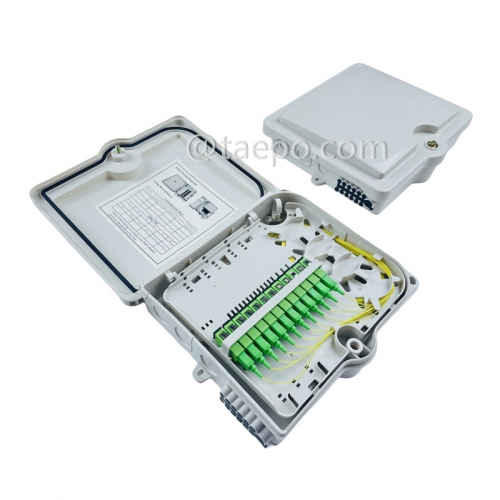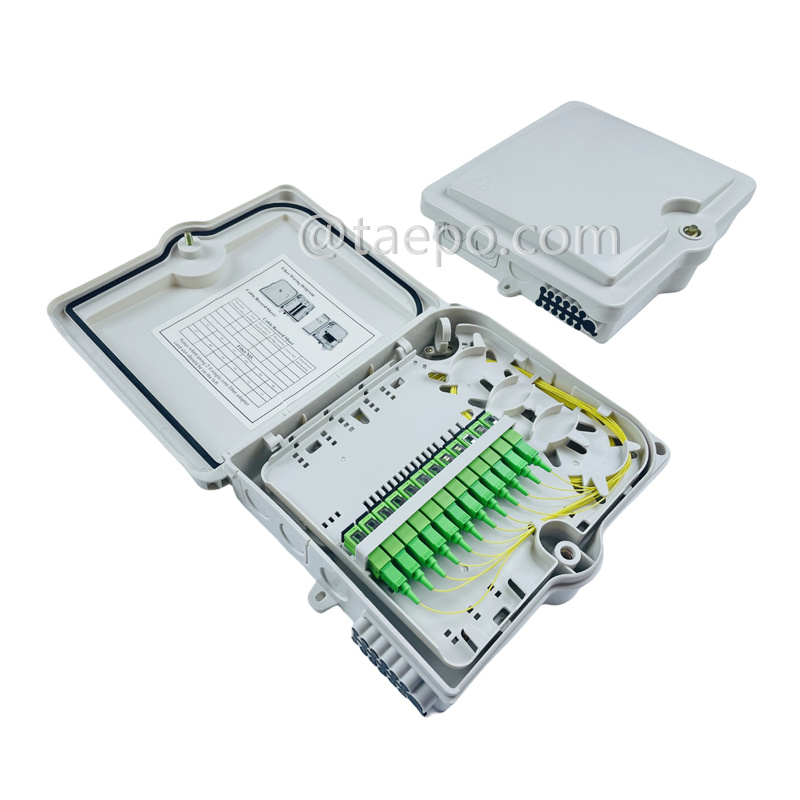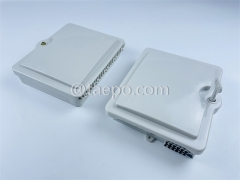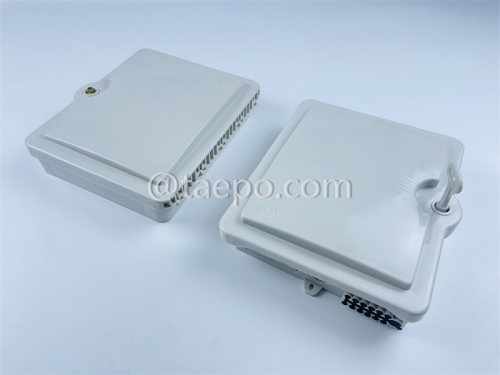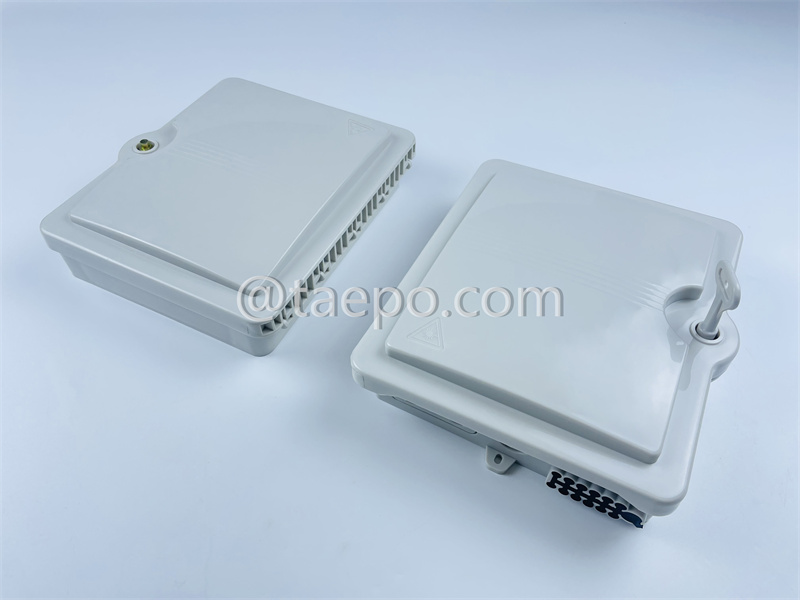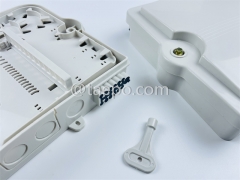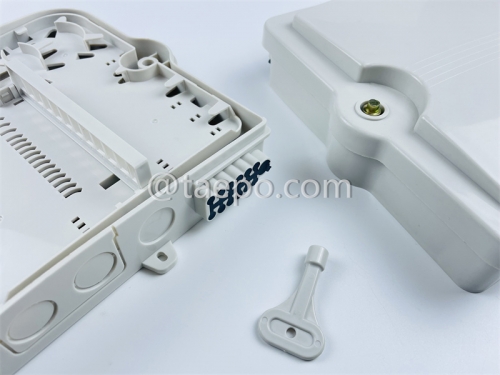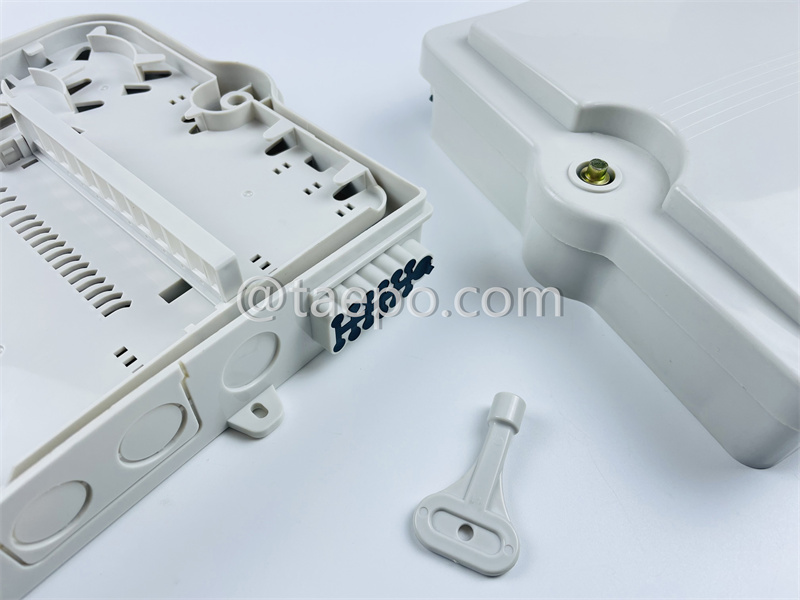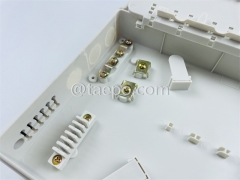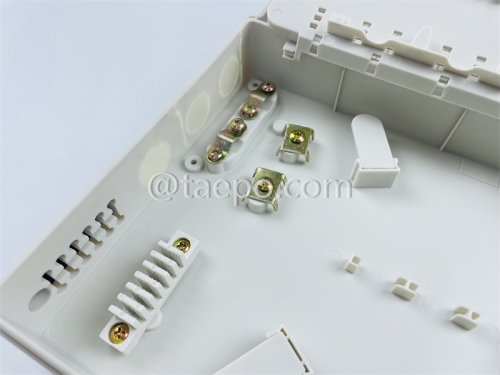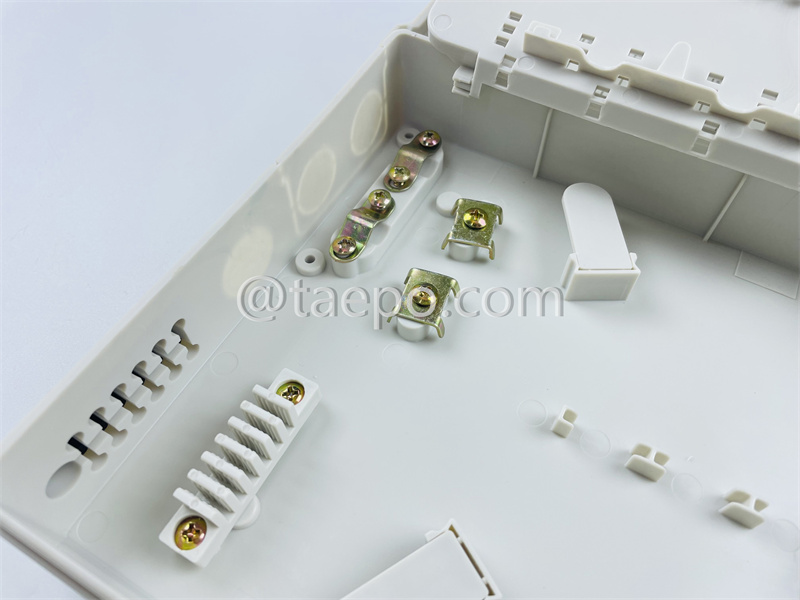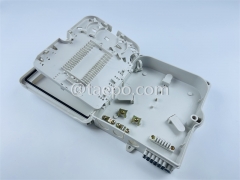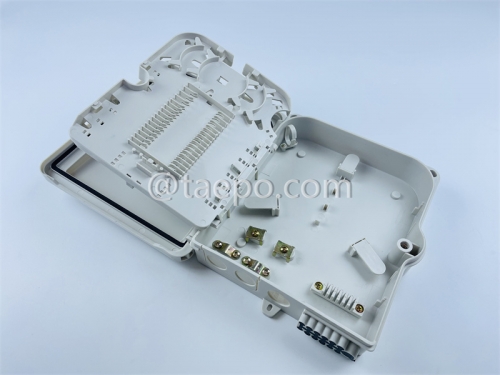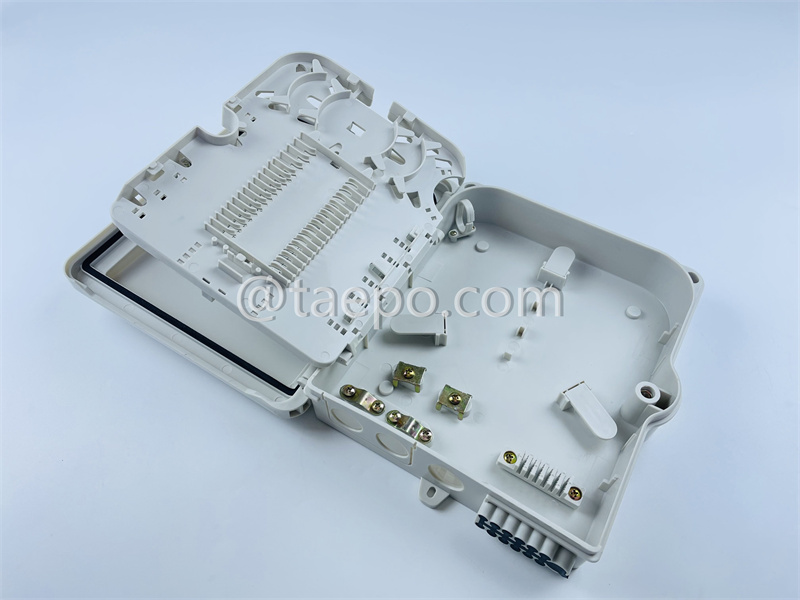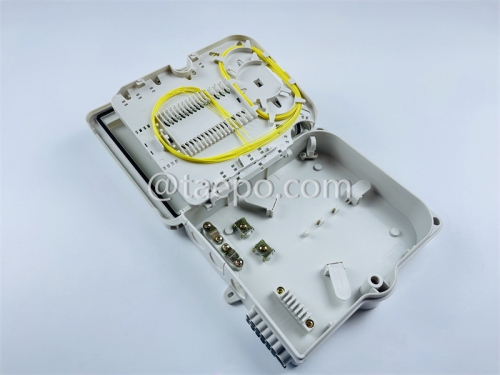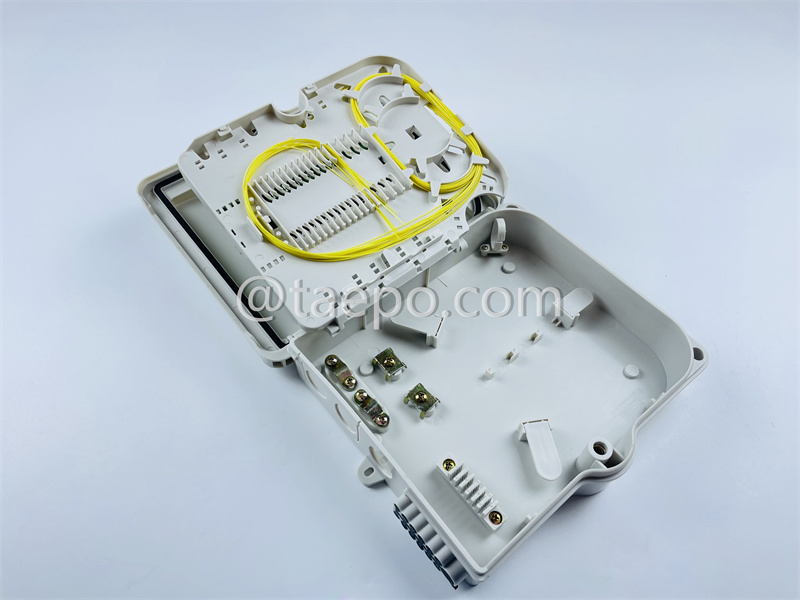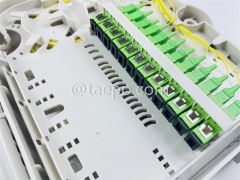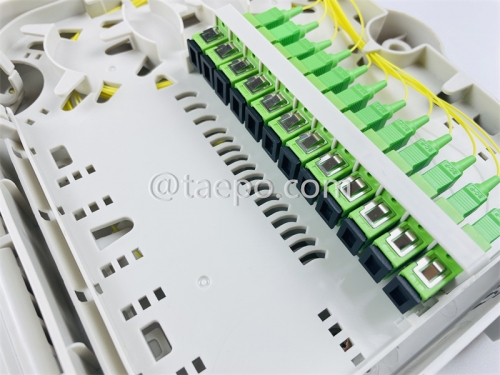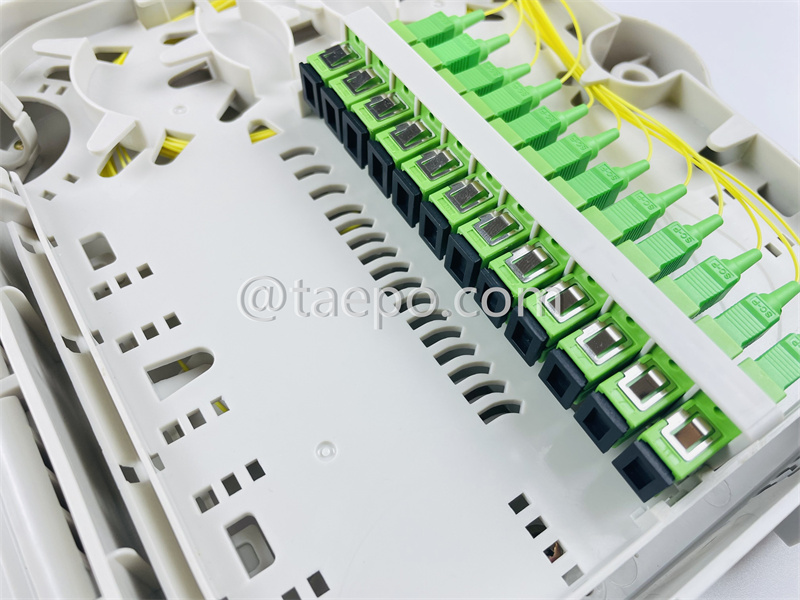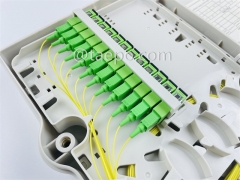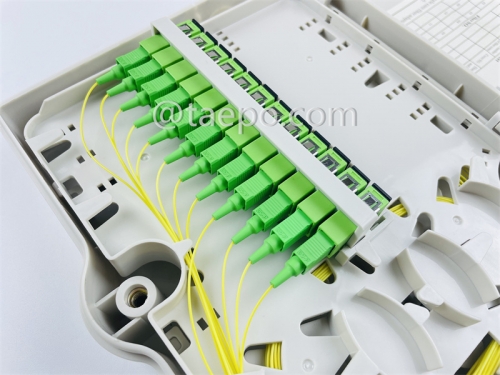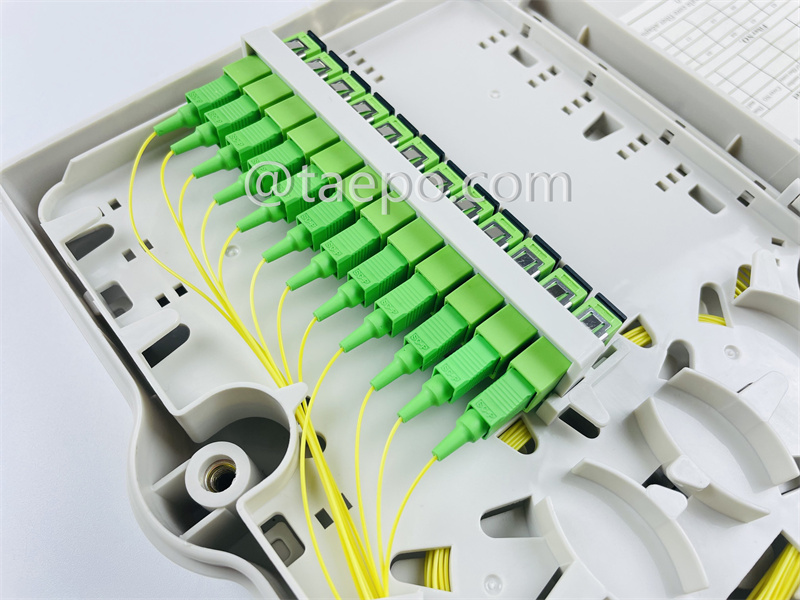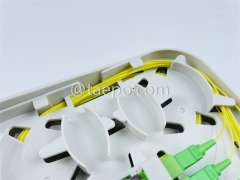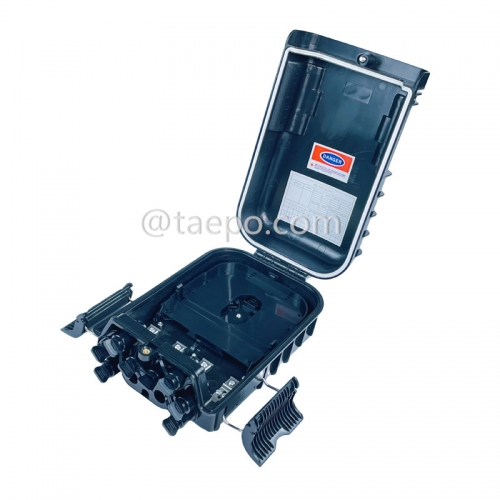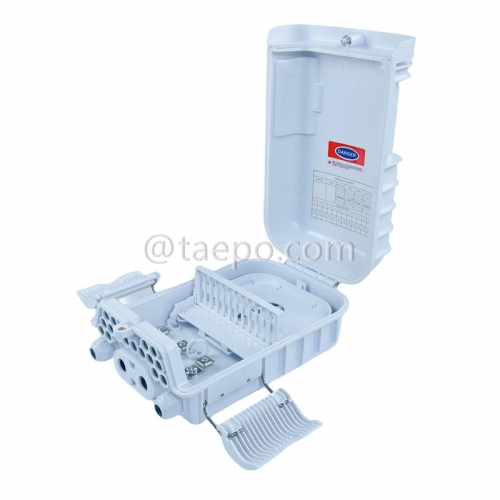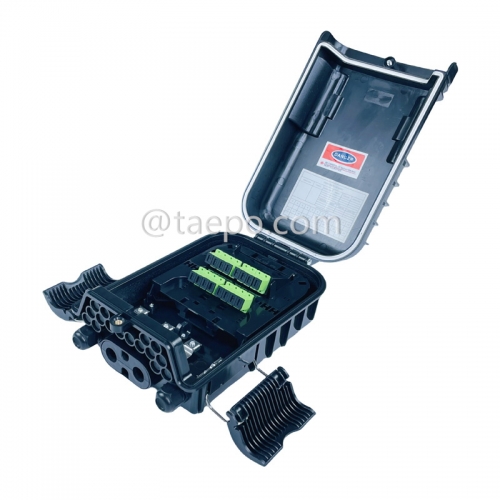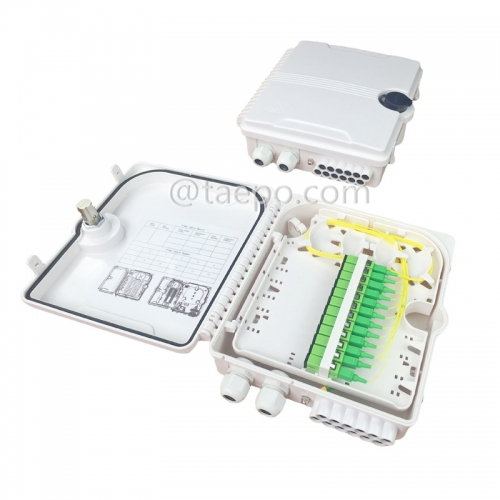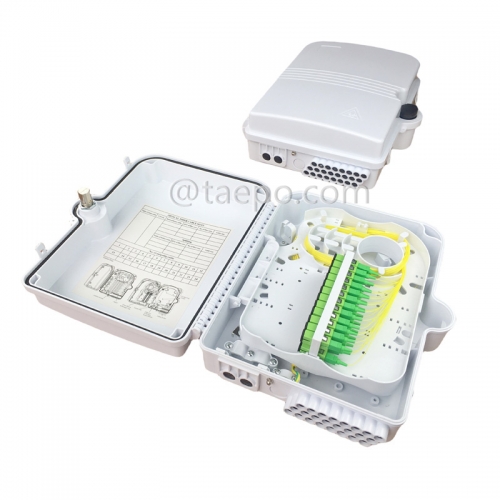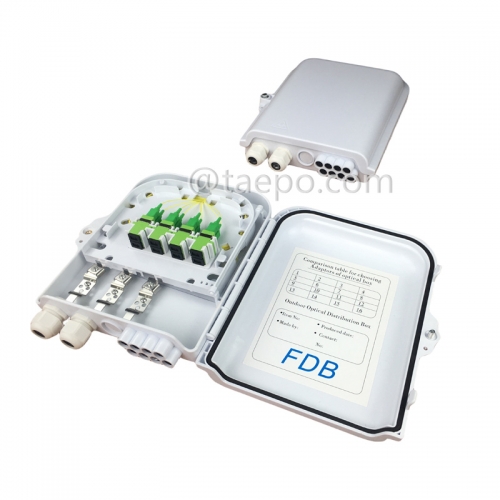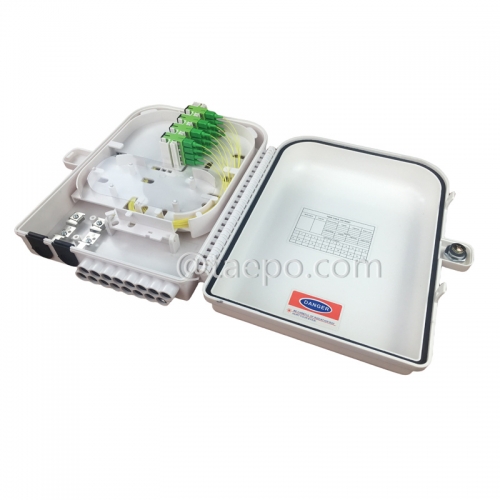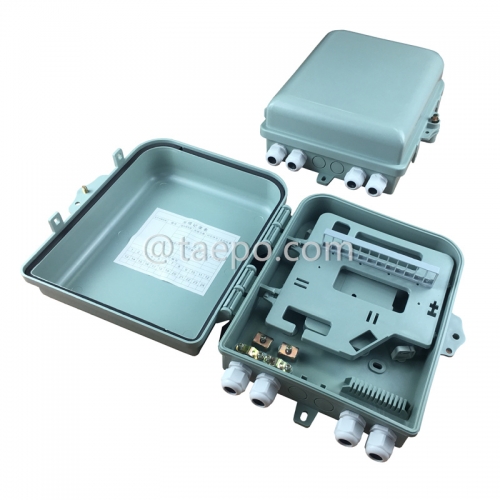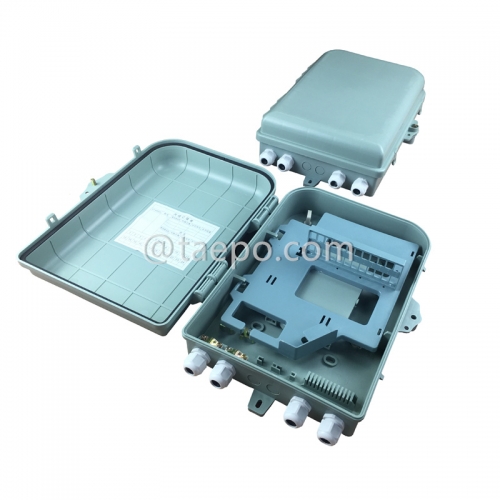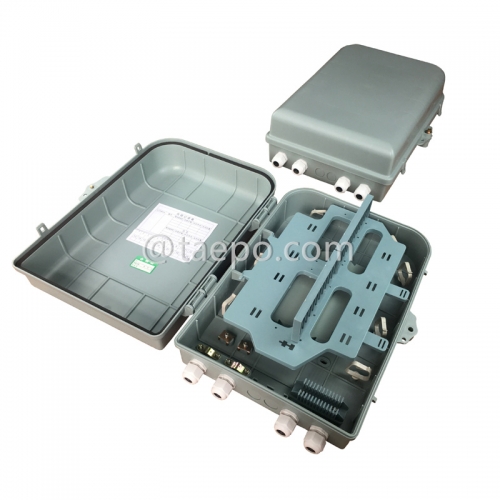TAEPO - Your Professional Fiber Distribution Box Manufacturer in China !
Descriptions
Fibe Distribution Box / FDB (TP-3221-12) is a rugged, low-cost, low-profile interconnect between the central office feed and the indoor/outdoor drop cables for multidwelling unit applications. It is also called multidwelling Unit (MDU).
It simplifies the FDB installation by reducing the materials, complexity and space required to turn up service. A single housing combines the functionality of a local convergence cabinet with an FDB terminal. The multilayer design allows installers to access only the components necessary for initial installation or subscriber turn-up.
Queston : How does "Fiber Distribution Box " work ?
Answer : A fiber optic distribution box works as a central hub for managing and distributing fiber optic connections in a network.
Here’s a step-by-step overview of how it operates:
1. Incoming Fiber Connections
- Termination: The distribution box receives incoming fiber optic cables, which are typically terminated with connectors. These cables can come from a main fiber backbone or other network infrastructure.
- Entry Ports: The box has designated ports where these incoming fibers are connected. Each port corresponds to a specific fiber optic line.
2. Fiber Splicing (if applicable)
- Splice Trays: If the incoming fibers need to be spliced (joined to other fibers), the distribution box contains splice trays. Technicians can use these trays to securely splice the fibers together.
- Fiber Management: The splice trays help manage the spliced fibers, preventing damage and maintaining signal integrity. They also keep the spliced fibers organized and protected.
3. Distribution to Outgoing Fibers
- Connection Points: The box allows for multiple outgoing fiber connections to various devices, locations, or networks. Each outgoing fiber is connected to its respective port within the distribution box.
- Cross-Connection: Technicians can also use patch panels within the box to create cross-connections between different fibers, routing signals as needed.
4. Cable Management
- Bending and Routing: The distribution box is designed to manage fiber cables properly, including bending radius and secure routing. This prevents excessive stress on the fibers, which can lead to signal loss or damage.
- Secure Storage: The box helps keep the cables organized and prevents tangling, making it easier for technicians to work on the network.
5. Protection and Environmental Shielding
- Weatherproofing: For outdoor models, the distribution box is typically weatherproof, protecting the fibers from moisture, dust, and other environmental factors.
- Mechanical Protection: The box provides physical protection against impacts and abrasion, safeguarding the delicate fibers inside.
6. Testing and Maintenance Access
- Access Points: Distribution boxes are designed for easy access, allowing technicians to quickly open the box to inspect, test, or troubleshoot connections.
- Testing Equipment: Technicians can connect testing equipment to the distribution box to assess the performance of the fiber links, checking for issues like signal loss or breaks.
7. Labeling and Identification
- Clear Labeling: Each port and connection can be labeled, allowing for easy identification of each fiber line. This simplifies troubleshooting and maintenance tasks, making it easier to locate specific connections.
8. Network Expansion
- Modular Design: Many distribution boxes are designed for scalability, allowing for easy addition of new fibers or connections as network demands grow.
- Reconfiguration: Technicians can easily reconfigure connections within the box to adapt to changing network needs.
-
Overall, a fiber optic distribution box acts as a centralized point for organizing, managing, and distributing fiber optic signals in a network. Its design and functionality ensure that fiber connections are secure, protected, and easy to manage, contributing to the overall efficiency and reliability of fiber optic networks.
Main Features
- Both indoor and outdoor applications
- Quick, easy and reliable connections
- Craft-friendly with easy access
- Maximum product lifetime and security
- Closure structure with excellent sealing performance
- Equipped with cable guide for tidy wiring
- Bending radius greater than 40mm.
- Robust long-term environmental stability
Schematic Diagrams
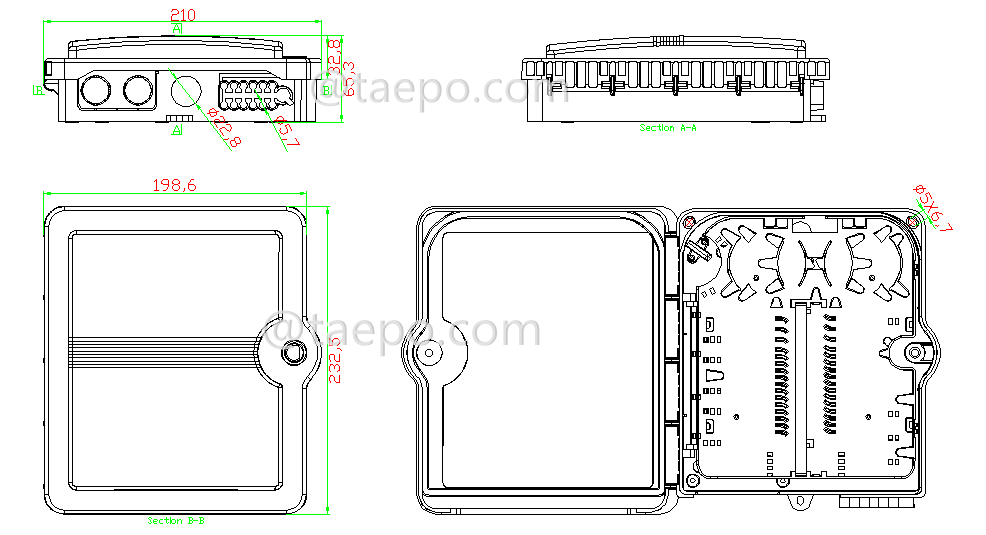
Packing Pictures
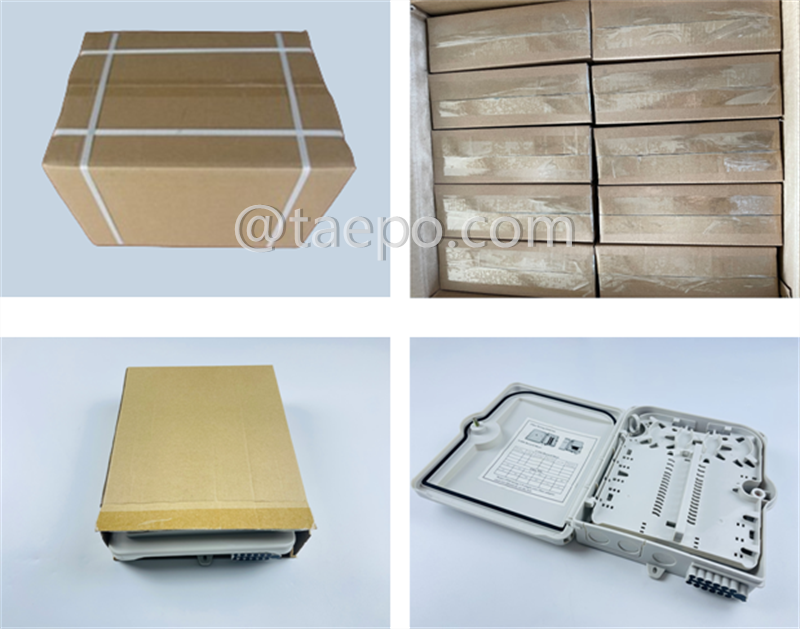
Order Data
| Item No |
Descriptions |
| TP-3221-12 |
Fiber distribution box (FDB), outdoor, SC, 12 fibers, plastic housing, 230x195x60mm, without adapters, pigtails |

